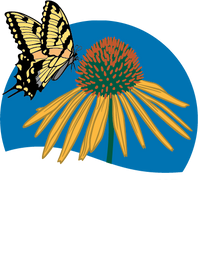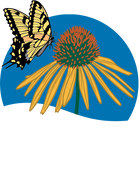



Adiantum pedatum - maidenhair fern
![]()
![]()

![]()
![]()
DESCRIPTION
maidenhair fern
Adiantum pedatum
This airy, delicate plant with lacy foliage and dainty reddish-brown stems thrives in deep shade and moist soil. Its fine texture compliments less delicate ferns and Hostas and is best used as a groundcover in woodland landscapes or rock gardens or as an appealing border in any moist, shaded garden.
Benefits
- Perfect for deep shade and moist soils
- Spreads slowly to create a lush groundcover
- Easy care and low maintenance once established
- Perfect accent for rock walls and shady water features
- Provides outstanding cover for small animals and birds
NATIVE INFO
Native Range
Found in moist woodlands and along streams, Maidenhair fern is native to most states east of the Rockies. Distribution Map

Native range derived from The Biota of North America
INTERESTING FACTS
Maidenhair Fern was believed to have numerous medicinal qualities utilized by several Native American tribes, from a cough medicine to a rinse for shiny hair. Certain tribes used the stems for designs in basketry and packaging for travel. Smoky Mountain folklore says if a maiden handles a stem and the leaves don't flicker, her virtue is assured.
GROWING TIPS
Grow Maidenhair Fern in part or full shade and acidic to neutral, moist, well-drained soils. It does not tolerate clay. Happiest in shade, but it can take more sun in northern zones and with adequate moisture. Spreads by shallow rhizomes. Adiantum pedatum goes dormant in periods of drought but will return the following spring.
Mature Size: 12-30" Tall x 12-18" Wide
Hardiness Zone: 3-8
Sun Exposure: Full to Part Shade
VIDEO
Coming Soon!
American Beauties Offer Solution Based Plant Collections to Help you Choose
Quick Tips for Choosing Plants:
- Planting a variety of native trees, shrubs, perennials and vines increases biodiversity and gives wildlife a source for food, cover and nesting
- Choose a mixture of deciduous and evergreen trees so birds and other wildlife will always be able to find shelter
- Plant trees and large shrubs where they will block winter winds from the house and shade it in summer, that will save energy and lower your carbon footprint
- Try your best to buy plants that were grown locally, your independent garden center will be your best bet
- Think about ultimate height and width of the plant you choose, make sure it will fit the space you have for it when it's reached maturity
- Plant nectar plants in groups, to attract butterflies and other beneficial insects more easily
- Ask for help if you need it. Most garden centers either have a landscape designer on staff or they can give you a reference of a designer that is adept at native plant wildlife gardening. There will be upfront costs but they are small when compared to having to redo a landscape that wasn't what you really wanted
Our Plant Tags Hold the Secrets to Success
Choosing the right plants for your garden can seem like a daunting task but we’re here to help. Our horticulturists have spent a considerable amount of time researching and writing our beautiful, American Beauties plant tags to help you be successful. First of all, when you see an American Beauties branded pot at your garden center you can be confident that the plant is native to your area and a responsible choice.
When you look at our tag you’ll find information about the plants natural habitat. That will give you a clue to how it will work in your backyard. For instance if the plant is naturally founded and moist, shade and you have full sun, it’s not the plant for you. The “Features” section gives you an overview or plant description so you’ll know what to expect. While the “Benefits” section talks about the plants strong suits and how the plant will benefit wildlife.
A Special Note About Exposure
Full sun: Prefers six or more hours of direct sunshine a day
Partial shade: Thrives in three to six hours of daily sunshine
Shade: Generally does well with less than three hours of sun per day. Having said that even shade loving plants will struggle in extremely deep shade.
DOWNLOADABLE RESOURCES
Best Plants for Bees - Double sided printout for download
Best Plants for Butterflies - Double sided printout for download



